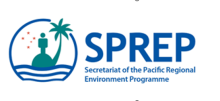
Formulating Smart Commitments on Biodiversity: Lessons from the Aichi Targets
Stuart H. M. Butchart1,2, Moreno Di Marco3,4, & James E. M. Watson4,5
The world is currently not on course to achieve most of the Convention on Biological Diversity’s Aichi Targets to address biodiversity loss. One challenge for those implementing actions to achieve them may be the complexity and lack of clarity in the wording of the targets, which also make it difficult to stimulate and quantify progress. Drawing on experience in developing and measuring indicators to assess progress toward targets, we identify four key issues: ambiguity, quantifiability, complexity, and redundancy. The magnitude of required commitments under some targets is rendered ambiguous by the use of imprecise terms (e.g., “substantially”), while many targets contain poorly defined operational terms (e.g., “essential services”). Seventy percent of targets lack quantifiable elements, meaning that there is no clear binary or numeric threshold to be met in order for the target to be achieved. Most targets are excessively complex, containing up to seven different elements, while one third of them contain redundancies. In combination, these four issues make it difficult to operationalize the targets and to ensure consistent interpretation by signatories. For future policy commitments, we recommend the adoption of a smaller number of more focused headline targets (alongside subsidiary targets) that are specific, quantified, simple, succinct, and unambiguous.









